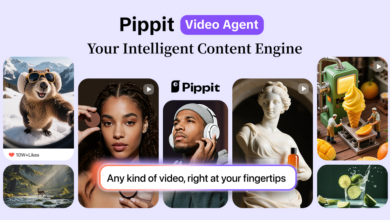By now, AI has grabbed our attention and likely appears on the agenda for nearly every company. While there is hype around the term AI, it is clear that advanced data analytics and machine learning are becoming increasingly prevalent in processes across companies and industries. But many organizations forget that robotic process automation (RPA) plays a crucial role in bringing AI to life. While some RPA tools bring friction to the integration with AI, the new generation of RPA tools (Gen2 RPA) brings synergy to the relationship between AI and RPA.
AI & RPA: the brains and the hands
The reality is that to get the full value from AI, you must automate an entire process. If you think of AI as the intelligent brains of processing data, then automation is the hands. It is critical to get the data and create actions based on the analytics and decisions. I wrote previously that if AI is the brains, then RPA is the hands.
Let’s look at a simple model of how AI is typically used. The AI solution must collect and process data, make conclusions and decisions, and put the results to operative use. Most AI solutions are not built to work in a vacuum. Instead, they must work across many systems, including legacy systems. The actual AI (the data analytics and decision-making) is a small part of the whole process, and automation tools allow AI to work with other systems, get data and start actions. In that earlier piece, I argue that the brains make up only 20% of an AI solution. RPA is a key element in the other 80%.
The failed promise of Gen1 RPA
While RPA has been on a rapid rise over the past several years, it has also shown limits, causing some to become frustrated, and even disillusioned, by the technology. The limits, which include brittle bots and the inability to scale beyond UI-based automation, are especially present in the first-generation RPA tools (Gen1 RPA). At Robocorp, we consider an RPA platform to belong to Gen1 when it places boundaries on automation through any combination of a proprietary toolset, license-based and up-front pricing, high infrastructure costs, or antiquated development and deployment experiences.
Successfully implementing AI integrations is especially challenging with the Gen1 development tools, which are oriented around the user interface. In-depth integrations with other systems are difficult, whether it’s through APIs, integration to data analytics tools, or building a seamless end-to-end process. AI implementations are based on real software development tools and programming languages.
Gen1 has other problems, for example, the robots are broken too often. The low-code/no-code development tools and “citizen-development” model often lead to bots that stop working when anything in the environment changes, including software updates. The software license models of Gen1 are also problematic to use for AI integration, as they require heavy front-end investments just for the development tools.
What’s new: Gen2 to the rescue
Gen2 RPA tools solve the problems of Gen1 for AI integration, and they offer the following benefits:
- Developer-focused experience. The development tools enable the use of programming languages (especially Python) that make it possible to integrate automation to other systems beyond the UI. This means RPA tools can be used to build end-to-end AI solutions and offer integration of AI and RPA to other software products.
- Developer tools with an open-source community. Professional software development tools make it possible to build stable robots that can better handle errors and special situations, as well as integrate to AI components. Open source is often the best way to connect multiple platforms, from small and niche systems to major and common ones.
- Consumption-based pricing. Companies pay for RPA tools when they actually use them, and when they can get value from them. With no up-front licensing costs, RPA can be added to AI systems without additional costs. If your goal is a robust AI solution, you certainly don’t want to invest more than necessary in RPA.
Gen2 RPA is designed to work with other software components and many IT systems. At Robocorp, we have focused on offering tools and solutions that can overcome the problems with Gen1 RPA, including our Automation Ops approach. Our modern approach incorporates the proven development best practices of uniting business and technical users, and it appropriately delegates their roles in planning, building, and maintaining software robots. These are all fundamental components to get AI to work.
In some cases, low-code and citizen development models can work for simple RPA implementations, for such simple tasks as copying data from Excel to SAP. But when we consider using RPA to build a proper AI solution, then professional developers, proper tools and programming languages, and a stable environment are all required. That’s why the Gen2 RPA model offers the necessary elements to seamlessly and powerfully pair RPA with AI.
When an organization considers an investment in AI, leadership must recognize that automation is required to implement and utilize AI. If AI is on your agenda, then I strongly urge you to look for automation solutions that complement and enable AI. Otherwise, results from AI projects will be limited and likely frustrating. Gen2 RPA tools can finally fulfill the promise of RPA automating work and bringing AI projects to scale.


